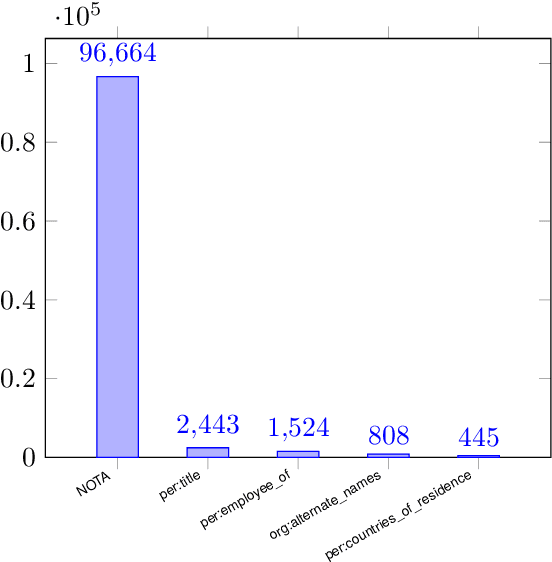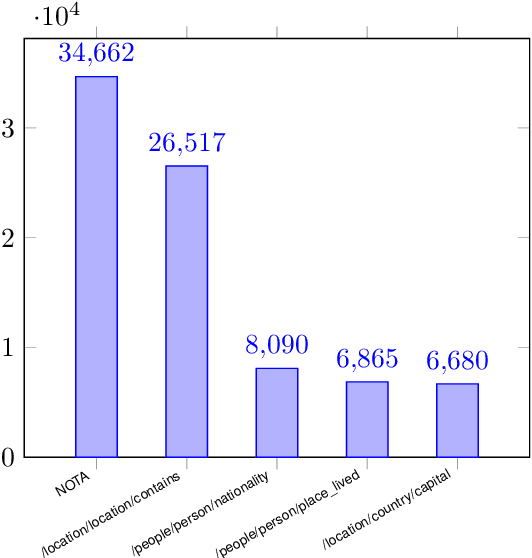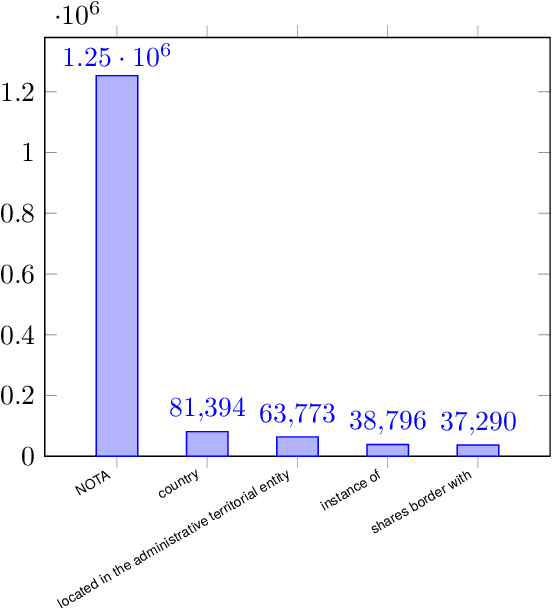Md Asiful Islam
Towards Realistic Few-Shot Relation Extraction: A New Meta Dataset and Evaluation
Apr 05, 2024



Abstract:We introduce a meta dataset for few-shot relation extraction, which includes two datasets derived from existing supervised relation extraction datasets NYT29 (Takanobu et al., 2019; Nayak and Ng, 2020) and WIKIDATA (Sorokin and Gurevych, 2017) as well as a few-shot form of the TACRED dataset (Sabo et al., 2021). Importantly, all these few-shot datasets were generated under realistic assumptions such as: the test relations are different from any relations a model might have seen before, limited training data, and a preponderance of candidate relation mentions that do not correspond to any of the relations of interest. Using this large resource, we conduct a comprehensive evaluation of six recent few-shot relation extraction methods, and observe that no method comes out as a clear winner. Further, the overall performance on this task is low, indicating substantial need for future research. We release all versions of the data, i.e., both supervised and few-shot, for future research.
Best of Both Worlds: A Pliable and Generalizable Neuro-Symbolic Approach for Relation Classification
Mar 05, 2024



Abstract:This paper introduces a novel neuro-symbolic architecture for relation classification (RC) that combines rule-based methods with contemporary deep learning techniques. This approach capitalizes on the strengths of both paradigms: the adaptability of rule-based systems and the generalization power of neural networks. Our architecture consists of two components: a declarative rule-based model for transparent classification and a neural component to enhance rule generalizability through semantic text matching. Notably, our semantic matcher is trained in an unsupervised domain-agnostic way, solely with synthetic data. Further, these components are loosely coupled, allowing for rule modifications without retraining the semantic matcher. In our evaluation, we focused on two few-shot relation classification datasets: Few-Shot TACRED and a Few-Shot version of NYT29. We show that our proposed method outperforms previous state-of-the-art models in three out of four settings, despite not seeing any human-annotated training data. Further, we show that our approach remains modular and pliable, i.e., the corresponding rules can be locally modified to improve the overall model. Human interventions to the rules for the TACRED relation \texttt{org:parents} boost the performance on that relation by as much as 26\% relative improvement, without negatively impacting the other relations, and without retraining the semantic matching component.
 Add to Chrome
Add to Chrome Add to Firefox
Add to Firefox Add to Edge
Add to Edge